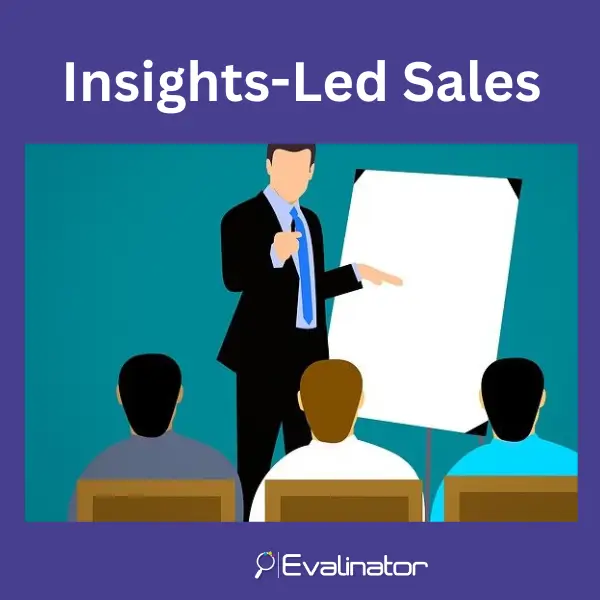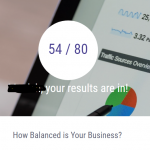


This is the age of insights-led sales. It means that going into a B2B sales meeting with slides to present about our company or product is probably not going to do much to interest prospective clients.
Unless the opportunity is immediate.
But most of us are not so lucky. Instead, 99% of the time, we hope to create just enough interest so that we can get a next step defined to stay engaged in the conversations. And we all know that we must lead with some kind of an insight and talk about something that will cause the client to sit up and take notice.
In short, we want to create a tangible and meaningful value exchange in our sales meetings.
In the olden days, circa 2003-2015, that insight was to take a Gartner study, or a study published by the American Banker or Nielsen, and talk intelligently about what the industry trends were, and how we could help the clients.
These days, there’s too much content out there for this to play any significant role in value creation for the client. Clients also have equal access to published information. In fact, they’ve probably analyzed those public reports more than we have. Plus, appearing intelligent about a 3rd party study requires the right expertise which most of us can’t manage all the time for our sales meetings.
So what can be done to enable this meaningful value exchange?
There is another tried and trusted way to create an insights led value exchange. And that method is to ask the right questions, assess the clients distance from their desired state, and then share insights based on your experience and expertise.
It’s always about being genuinely helpful.
On the one hand we have our qualifying sales questions (budget, urgency, timing, decision maker etc.). And on the other hand, in order to enable an insights led conversation, we need to be prepared with contextual questions around the subject area we want to help the client with.
Sales are often trained on the service and product offerings, and these questions present themselves in the form of qualifying questions, exploratory questions, etc. These questions also also often find their way into the CRM as part of the customer record.
When organized into a proper model, these questions should allow us to do 3 things:
As you can imagine, a client conversation that can accomplish all this will be very powerful indeed.
One way to have these questions ready is in the form of an easy to use maturity model (see this blog on using maturity models). These models are simply a series of investigative questions that are scored to create a custom benchmark of the clients current state.
Once these questions are arranged in a maturity model, you can weave them into a purposeful conversation. It’s also often a good idea to secure the clients permission to engage in this dialog. e.g. Is it ok if I ask you a few questions over the course of our meeting to understand your business or technology landscape better?.
During the conversation, you position the questions in your maturity model at suitable times. If the agenda is clear and you have asked for permission (see last section), these should present themselves naturally.
For example, your question could be “How do you generally make changes to the promotions you offer on your website?“. Their response could be “we have a CMS but we do need a better content approval workflow“. This response gets recorded in your maturity model.
Optionally, you can simultaneously present the client with immediate feedback on their response to the individual questions. For example, having a CMS is great, and faster approval workflows can raise retention rates by almost 10%. In return you get their take on what they think.
 More importantly, if you are using Evalinator, you can record each such response (explicitly answered or implicitly inferred) into your own custom maturity model that you have prepared already with your subject matter experts. And before you end the conversations, you are then able to share with the client an overall quantitative chart that has their responses neatly benchmarked into an easy to understand manner. Consider for instance that they scored 54/80. Then you can bring up the reasons for that 26 point gap and discuss them openly.
More importantly, if you are using Evalinator, you can record each such response (explicitly answered or implicitly inferred) into your own custom maturity model that you have prepared already with your subject matter experts. And before you end the conversations, you are then able to share with the client an overall quantitative chart that has their responses neatly benchmarked into an easy to understand manner. Consider for instance that they scored 54/80. Then you can bring up the reasons for that 26 point gap and discuss them openly.
You can even share the results with your client by offering them secure and isolated access to this data. In addition all of this information goes directly into your CRM. So the next time you can pick up right where you left off. Your extended team has access in real time too.
Having such an insights led sales conversation builds trust and keeps the conversation customer-centric.
Then you can add to this value exchange by offering to help them with a simple action. This action can be either paid or free. It should stems logically from the discussion. For example, you might set up a demo of your analytical model that can predict their online promotions better.
Thus your next steps follow logically.
If you noticed, the biggest outcome of such a conversation, is that the focus is now squarely on the client. You are not talking only about your solution or your skills. Instead you are helping the client brainstorm a solution to a problem you have just uncovered jointly with them.
Isn’t that what you really wanted to accomplish?
Summary
An insights-led sales conversation turns every interaction into a discovery and road-mapping session. This is valuable as you try to stay top of mind as a trusted advisor. Mike Schultz of the Rainmaker group outlines their perspective on the insight-selling method here.
However, this approach does require preparation and a clear idea of the value-exchange that is meaningful to your clients. You must carefully curate the model with your target client’s role and motivations in mind. For example, a CIO conversation may be much higher level than a conversation with an enterprise architect. They also have different motivations. Thankfully, you can create models that are just right for each profile by using Evalinator.
If you’re interested in giving this a shot, then read more here and sign up for a free trial. We’ll be there every step of the way to help you be successful.